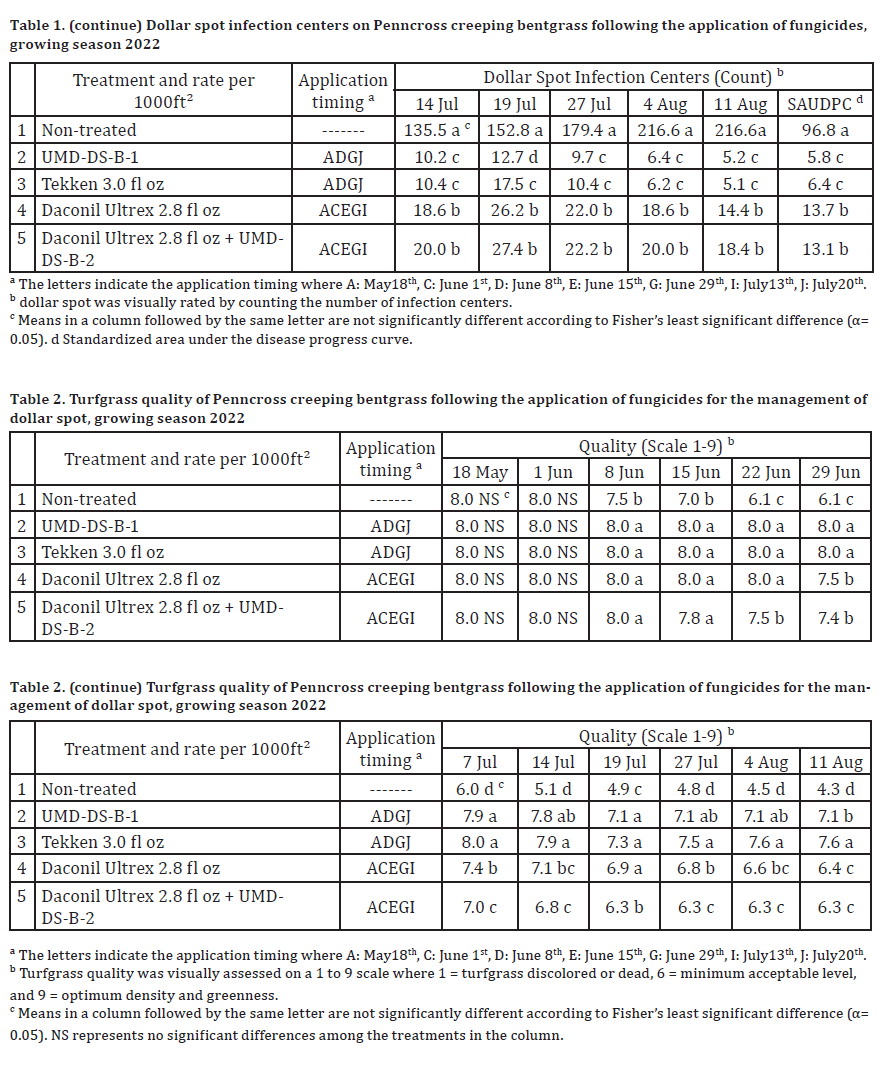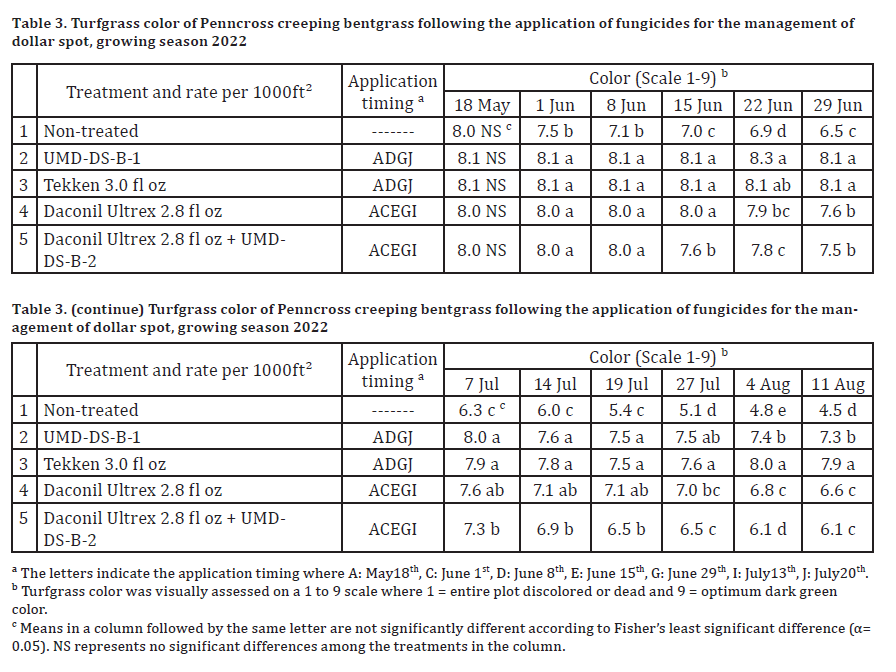Evaluation of New and Commercially Available Fungicides for the Management of Dollar Spot on Fairway Height Creeping Bentgrass
Fereshteh Shahoveisi, Department of Plant Sciences and Landscape Architecture, University of Maryland, College Park
Dollar spot is caused by several Clarireedia species (Clarireedia spp.). A field study was designed and conducted at the Paint Branch Turfgrass Facility in College Park, Maryland to evaluate the efficacy of new and commercially available fungicides in the management of the disease. fairway height (0.5-inch height) creeping bentgrass cv. Penncross was used to test the fungicides. A nontreated control was also included.
Treatments were applied every 14 or 21 days beginning May 18th until July 20th, 2022. A total of 1.5 gal /1000 ft² fungicides in 3×6 feet plots were sprayed at each application using a CO2 backpack sprayer equipped with a Teejet AI9506E nozzle. A randomized complete block design with four replications was used. The number of dollar spot infection centers, quality and color (19 scale) were rated approximately every week starting June 1st until August 11th. Quality and color were rated on the first application date (May 18th), as well. Analysis of variance and Fisher’s least significant difference (LSD) procedure at α= 0.05 were used to compare the treatments in their efficacy in managing dollar spot and improving the quality and color of turfgrass. Rank transformations were used for non-parametric data including quality and color.
The dollar spot pressure was high during the study period. The dollar spot infection centers were significantly higher in non-treated plots compared to treated ones starting June 1st; the number of the centers in non-treated plots increased to an average of 216.6 per plot by August 11th. UMDDS-B-1 and Tekken showed the best performance in disease management with a maximum of 17.5 and 12.7 centers per plot, respectively, on July 19th. Daconil Ultrex and Daconil Ultrex mixed with UMD-DS-B-2 significantly reduced the disease level compared to non-treated plots where the maximum centers were 26.2 and 27.4 (respectively) on July 19th. The standardized area under the disease progress curve (SAUDPC) also verified this result (Table 1).
The quality and color of turfgrass were measured on the first application date (May 18th) and there were no significant differences among treatments. The quality and color of turfgrass in non-treated plots started to decrease as disease pressure elevated. Tekken and UMD-DS-B-1 significantly improved the color and quality of grass throughout the study duration. Further, Daconil Ultrex and Daconil Ultrex mixed with UMD-DS-B-2 improved the quality and color to an above minimum acceptable value (above 6 on a 1-9 scale) with significant differences compared to non-treated plots. While Tekken and UMD-DS-B-1 outperformed Daconil Ultex and Daconil Ultrex mixed with UMD-DS-B-2, only some differences were statistically significant (Tables 2 and 3).


